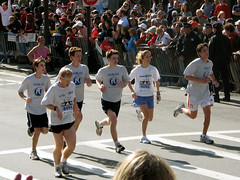April 6, 1864 -- A solemn anniversary is upon us. On April 12, it will be three years since the Confederates fired on Fort Sumter to begin this tragic war. We did not start the conflict (though one could argue the Republican administration provoked it) and it is true most Northerners originally supported the war. However, let us mark this anniversary with an inventory of our progress, and let us hope the President will do the same.

To be sure, there have been some successes. Last July, General Meade repelled a strong Confederate force at Gettysburg. It has been nine months since Robert E. Lee last ventured north of the Potomac. The day after the victory at Gettysburg, General Grant accepted the surrender of Vicksburg and gained control of the Big Mississippi. Last November, Grant routed the Army of Tennessee at Chattanooga. Now Grant has been promoted to lead the entire Union Army. He is the sixth man to lead the army in these three long years. Without a doubt he is the most capable.
However, we must also consider the costs. The number of killed, wounded or missing at Fort Donelson, Tennessee was close to 20,000. The casualties at Shiloh, Tennessee were over 23,000; at Stones River, Tennessee -- over 24,000; at Second Bull Run -- more than 25,000; at Antietam -- 26,000; at Chancellorsville -- 30,000; and at Chickamauga -- over 34,000. At Gettysburg, more than 51,000 Americans were killed, wounded or missing. Those are just the figures for the costliest battles so far. To force the South to surrender, we must now chase Robert E. Lee into Virginia. General Grant's army will no doubt suffer tens of thousands of casualties at the hands of a desperate Confederate defense.
And what of the Deep South? With Grant in Virginia, "Crazy Bill" Sherman is now in charge of the western offensive. Sherman lost his nerve after Shiloh. Can he lead his troops to victory in the Deep South? Many Northerners are deeply troubled by Sherman's appointment.
Of course, the quality of our military leaders is only part of the problem. What really concerns most Northerners is our confusing war aims. Two years ago, the President said:
My paramount object in this struggle is to save the Union, and is not either to save or to destroy slavery. If I could save the Union without freeing any slave I would do it...
But within a few months, Lincoln issued his Emancipation Proclamation. We have no great love for the institution of slavery, but freeing the slaves has reduced the chances of restoring the Union. How much more tenacious will the Confederate Army be now that they are defending, not just their homes, but their way of life? One can only conclude the President lied about his war aims. For Abraham Lincoln, this war has been about slavery all along.
Polls show only 30% of the North now supports the war and President Lincoln's approval rating is at an all time low. It is time Lincoln faced the facts. He cannot possibly win re-election in November and we cannot restore the Union. Let's bring our troops home and let the South go.




 April 18 will be the 100th anniversary of the great San Francisco earthquake. The magnitude 7.8 earthquake devastated the city. The ensuing fire caused even more destruction.
April 18 will be the 100th anniversary of the great San Francisco earthquake. The magnitude 7.8 earthquake devastated the city. The ensuing fire caused even more destruction. 
